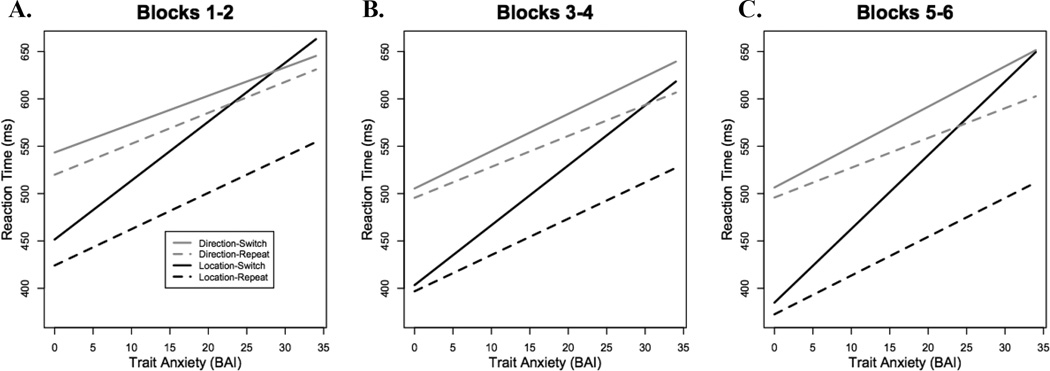Figure 3.
Anxiety effects with RTs by task and by switch, both before (A and B) and after (C) the cue-to-task mapping reversal. Levels of trait anxiety were associated with larger asymmetric switch costs. Namely, location task lines diverge substantially (i.e., exhibiting larger switch costs) for those with high anxiety, but diverge at a much smaller degree for the direction task, even for those high in trait anxiety. Dysphoria (as measured by the BDI) was controlled for in all linear models.

